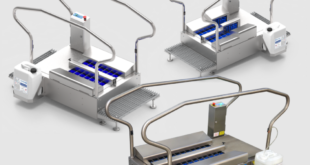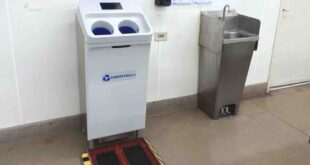Preparing for winter involves more than turning the heating on and digging out your winter coat. For example, blocking drafts, covering outside taps and bleeding radiators can all make your home more efficient while reducing energy costs. Similarly, when working with heat transfer systems, manufacturers can follow some simple steps to optimise their facilities for colder weather. Dave Dyer shares his advice for maximising heat transfer system productivity during the winter
Just like the cold weather can affect our homes, it can also have an impact on the components of a heat transfer system and the fluid itself. So, what can manufacturers using heat transfer fluids do to maximise uptime in the winter months?
Keep oil under cover
To maintain uptime, businesses will often store barrels of new thermal fluid onsite to quickly top up or refill the system. Facilities managers with limited storage space may store new fluid outside, but this can shorten fluid lifespan, reducing its efficiency once it enters the system. Manufacturers must store thermal fluid indoors all year round, but this is particularly important in winter and colder conditions.
When kept outside, water or condensation can enter the barrels, even if they are sealed. During temperature changes, thermal fluid drums, barrels and intermediate bulk containers (IBCs) kept outside for longer periods will expand and contract, causing a vacuum. This process syphons any water or condensation sitting on top of the container into the oil, making it unusable. The greater the temperature change, the larger the expansion and retraction, so extreme weather or freezing temperatures could be more damaging. Moving barrels under cover, ideally indoors before the winter weather comes is therefore integral to keeping operations running.
Keep pumps circulating
If thermal fluid is left in a system that is not operating, it can become viscous and waxed. Heat transfer fluid in this state is difficult to bring to temperature, and could damage the pump and other integral equipment.
The best way to avoid downtime caused by waxed viscous fluid is to keep pumps running when temperatures drop below -8°C. The friction and heat from the pump will keep the oil at a temperature that ensures it stays warm and less viscous — warm pipes also raise the ambient temperature, reducing the risk of surrounding water pipes freezing. Taking these steps, particularly if plant managers shut down operations over winter, helps reduce unnecessary wear on critical parts of the system and avoid issues with lack of flow during start-up.
Have contingency fluid
Thermal fluid will contract when temperatures change significantly, reducing the amount of fluid in the system. A reduction in fluid quantity will impact system efficiency and could accelerate wear on critical system components. To maintain productivity, operations engineers should regularly check fluid levels, top up when needed and have reserve fluid available to ensure they can intervene.
Order a spill kit
To maintain safe operations, it’s always good practice to keep a spill kit on site, placed close by the system so it’s easily accessible. The kit includes personal protective equipment (PPE) and absorbent materials to address any spills or leaks. This is particularly important in winter so that any spilled fluid doesn’t freeze, which could lead to slips and trips.
Check your CDX tank
Many heat transfer systems are susceptible to moisture and debris contamination over time. If left unattended, moisture can negatively impact the system’s performance and efficiency. Expansion tanks, such as CDX tanks, have a drain on the condensate (dump) side to help manage this.
Manufacturers that have a CDX tank can open this valve during winter months. As the thermal fluid expands and contracts during production, air will move around the tank, which can release moisture content. Opening the valve to release one or two litres of fluid will let out any moisture and debris — it’s good practice to do this on a monthly basis all year round to prolong fluid life and maximise uptime.
As we get closer to winter, taking the time to check and maintain our homes means we can be confident that, once we turn the heating back on, everything will work well. Similarly, when working with thermal fluids, adding a few extra steps to your preventative maintenance plan, can help manufacturers keep operations running over the colder months and during winter shutdowns.
Dave Dyer is technical sales engineer at thermal fluid management specialist Global Heat Transfer.
 Engineer News Network The ultimate online news and information resource for today’s engineer
Engineer News Network The ultimate online news and information resource for today’s engineer



